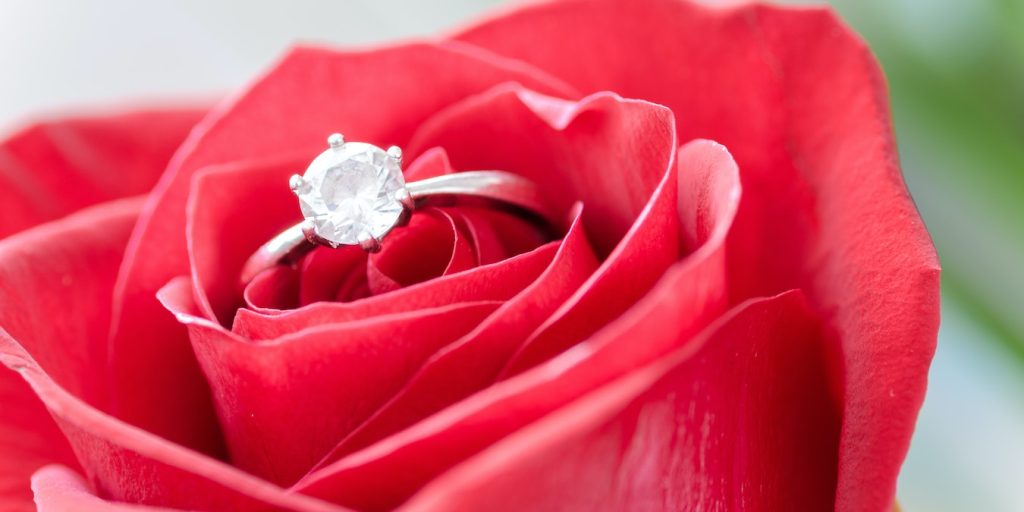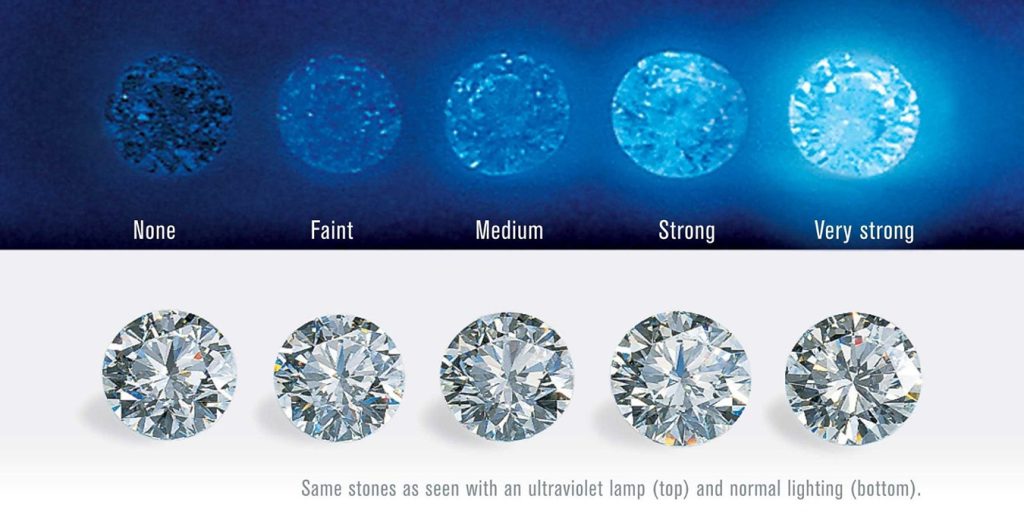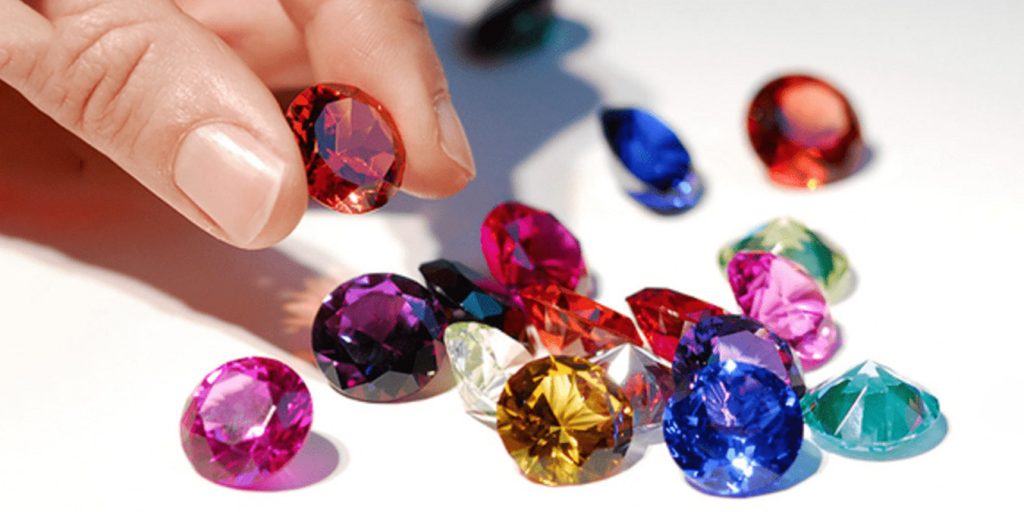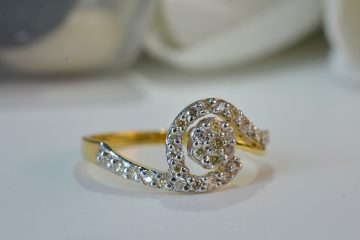Diamonds are some of the most precious and sought-after gems in the world, and their beauty and value have been revered for centuries. One of the unique characteristics of diamonds is that some fluoresce, meaning they emit visible light when exposed to ultraviolet (UV) light. This phenomenon can make diamonds appear even more dazzling, but it can also affect their value and desirability. This article will examine the basics of fluorescence in diamonds and the factors that determine whether it’s considered “good” or “bad.”

What is Fluorescence in Diamonds?
Fluorescence refers to the property of certain materials, including diamonds, to emit visible light when exposed to ultraviolet light. The fluorescence intensity can vary from a faint glow to strong and visible light. The fluorescence color can also vary, ranging from blue to yellow and even green.
Fluorescence occurs when the ultraviolet light excites electrons in the diamond, causing them to release energy in the form of visible light. This energy release is temporary, and the fluorescence stops when the UV light is removed.

How Does Fluorescence Affect the Value of Diamonds?
The impact of fluorescence on the value of a diamond is a matter of personal preference and market demand. Some people prefer diamonds with strong fluorescence, as it can make the diamond appear brighter and whiter. However, others feel that the fluorescence can make the diamond look hazy or milky, detracting from its overall beauty.
In general, diamonds with fluorescence are less valuable than those without it. This is because diamonds with fluorescence are often viewed as of lower quality than their non-fluorescing counterparts. However, this isn’t always the case, and the impact of fluorescence on the value of a diamond can vary depending on several factors.
One of the most important factors is the intensity of the fluorescence. Diamonds with faint or medium fluorescence are usually not considered to be a problem and may even be considered desirable by some buyers. However, diamonds with strong fluorescence can be seen as having a negative impact on their appearance, and as a result, they may be valued lower than diamonds without fluorescence.

Conclusion
Fluorescence in diamonds is a unique property that can either enhance or detract from their overall beauty and value. The impact of fluorescence on the value of a diamond depends on several factors, including the intensity and color of the fluorescence. Some people prefer diamonds with strong fluorescence, while others view it as a negative characteristic. Ultimately, the value of a fluorescing diamond is determined by market demand and personal preference.



0 Comments